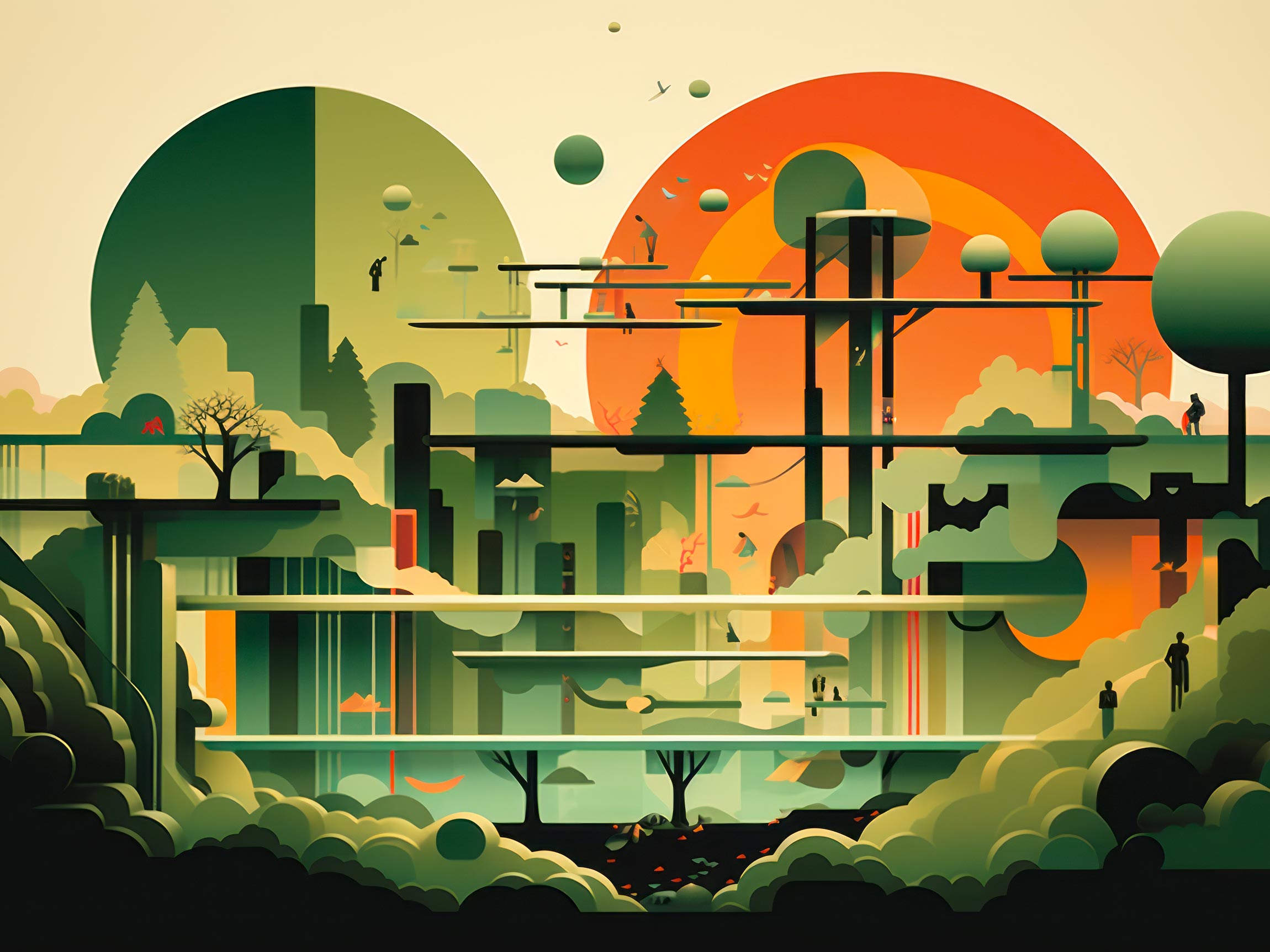Nature’s ecosystems are a testament to the delicate balance achieved through the coexistence of diverse species, each playing a distinct role in maintaining the health of the environment. The design world echoes these complex ecosystems, all thanks to the idea of hierarchy. Just as species in an ecosystem assume various positions, contributing to the ecosystem’s equilibrium, design elements at different levels of hierarchy serve unique functions in crafting visually engaging and meaningful compositions.
Design’s Ecosystem: A Hierarchy of Elements
Design compositions, whether it’s a web page or a poster, consist of various elements working harmoniously. These elements, ranging from typography and color to imagery and whitespace, create a visual hierarchy that guides the viewer’s experience. Similarly, in ecological ecosystems, species organize themselves into intricate hierarchies, each contributing to the stability of the ecosystem.
Analogous Roles: Hierarchy in Action
The parallels between design hierarchy and ecological ecosystems become apparent when we observe how elements at different levels perform analogous roles. Just as apex predators in an ecosystem regulate the population of other species, primary design elements set the tone and dominate attention in a composition. The middle-tier elements, equivalent to herbivores in nature, contribute to the narrative and play a supporting role. Meanwhile, the lower-level elements, akin to decomposers, add finesse and tie the composition together.
Balance Through Distribution: Equilibrium in Nature and Design
In both ecological systems and design, equilibrium hinges on the thoughtful distribution of elements. Ecological ecosystems thrive when there is a balance between predator and prey populations, maintaining biodiversity and ecosystem health. Similarly, design compositions find equilibrium when the visual weight is evenly distributed across elements, preventing one from overpowering the others. This balance ensures that the viewer’s attention is guided seamlessly, allowing for a cohesive and engaging experience.
Specialization and Diversity: A Parallel Pursuit
One of the cornerstones of ecological ecosystems is species specialization, where each organism assumes a role optimized for their unique strengths. Design hierarchy mimics this diversity through the specialization of elements. Typography conveys information, color evokes emotion, imagery tells a story—each element specializes in a particular function. Just as a diverse array of species contributes to the resilience of an ecosystem, the specialized roles of design elements foster a dynamic and impactful visual narrative.
Adaptation and Evolution: Parallel Progression
Ecosystems undergo adaptations to survive changing conditions, leading to the emergence of new species and behaviors. Design, too, evolves to adapt to the ever-shifting landscapes of aesthetics and communication. Just as evolution allows species to thrive in their environment, design evolution ensures that visual compositions remain relevant and resonate with their intended audience.
Synergy and Symbiosis: Nature and Design Unite
The parallels between design hierarchy and ecological ecosystems illuminate a fundamental truth—the intricate interplay of elements leads to the creation of vibrant and harmonious systems. Just as an ecosystem relies on the synergy between species, design relies on the symbiosis between elements. This symbiotic relationship, whether in nature or design, underscores the universal principle of balance and cooperation.


